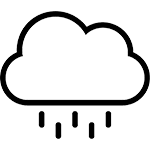14-14-14 fertilizer. What does it mean? Is it any good? How do you use it? We’re here to answer all your questions about the 14-14-14 fertilizer, and tell you how to get the most out of this product!
We’ll start off by explaining what 14-14-14 means so that there’s no confusion. It refers to the percentage of nitrogen (N), phosphorus (P2O5), and potassium (K20) in your fertilizer. Generally speaking, the higher these numbers are on a bag of fertilizer, the more nutrients will be available for plants.
What is 14-14-14 Fertilizer Good for?
One thing that you don’t want to do is use 14-14-14 fertilizer on everything in your garden. That’s not how things work! It’s best used for specific types of plants, and many people supplement with it when their plants need a boost.
Some common uses are:
- Houseplants
- Azaleas and Rhododendrons
- Lawns (it’s important to note that you want slow-release fertilizer)
There is a list of plants on the packaging. If you’re not sure if it’ll work for what you’re trying to grow, look at this list!
When to Use It?
When to use 14-14-14 fertilizer: Early Spring and Fall. Apply before planting seeds or transplanting seedlings. In late summer, apply a light dressing of nitrogen for leaf growth in the fall. It is important not to over-fertilize with this ratio because it can burn roots and leaves which leads to poor plant development from lack of water uptake. – How much should I add? The application rate depends on what you are planning to grow so be sure to check the package directions! For flowering plants growing indoors or out, no more than 60 pounds per 100 square feet should be used while 500 pounds may be applied for lawns every four years only if soil tests indicate low levels of phosphorus and potassium according to the University Of California.
When should I apply it? 14-14-14 fertilizer is best applied in the spring when temperatures are above 40 degrees Fahrenheit. It can be used in late summer or early fall, but only if the temperature remains above 60 degrees for at least four consecutive days. If applying after an extended period of cold weather, you’ll want to wait for the soil to warm up before applying.
Best 14-14-14 Fertilizer
Southern Ag Osmocote Controlled Release Fertilizer 14-14-14
There’s no need to constantly fertilize plants with our Controlled Release Fertilizer. When you use Southern Ag Osmocote 14-14-14, your plants will get the nutrients they need for up to four months. This fertilizer features continuous metering of nutrients and is perfect for all sorts of outdoor plants such as potted plants, hanging baskets, flower beds, and vegetable gardens!
Everris 90550 Osmocote Classic 14-14-14
You want your plants to grow up big and strong, so what you’re going to need is Osmocote Classic 14-14-14. Without the right nutrients in the soil, it’s hard for them to do much growing at all. You can help your plants out by using this dependable fertilizer that provides the micronutrients they’ll need for optimum growth. It will keep grass green all year long in any climate! Available in a 50 lb bag — plenty of good nutrition for all of your lawns!
Schultz SPF48300 14-14-14 Plant Food
Schultz Plant Food is a 100% organic lawn fertilizer that only has to be applied once in the growing season. It’s ideal for all flowers, fruits, and vegetables because it not only contains essential nutrients but also eliminates overfeeding which can cause leaves yellowing or growth stunting. Schultz plant food is slow-release, meaning you’ll never have to worry about adding chemicals again!
How to Use 14-14-14 Fertilizer
The application of 14-14-14 fertilizer is a great way to supplement the nutrition your lawn needs. It’s common to see it used after seeding, as well as in fall and spring during periods when grass growth slows down due to cold or dry conditions. Use a broadcast spreader for even coverage across an entire yard or use a hand-held spreader to fertilize specific areas.
















